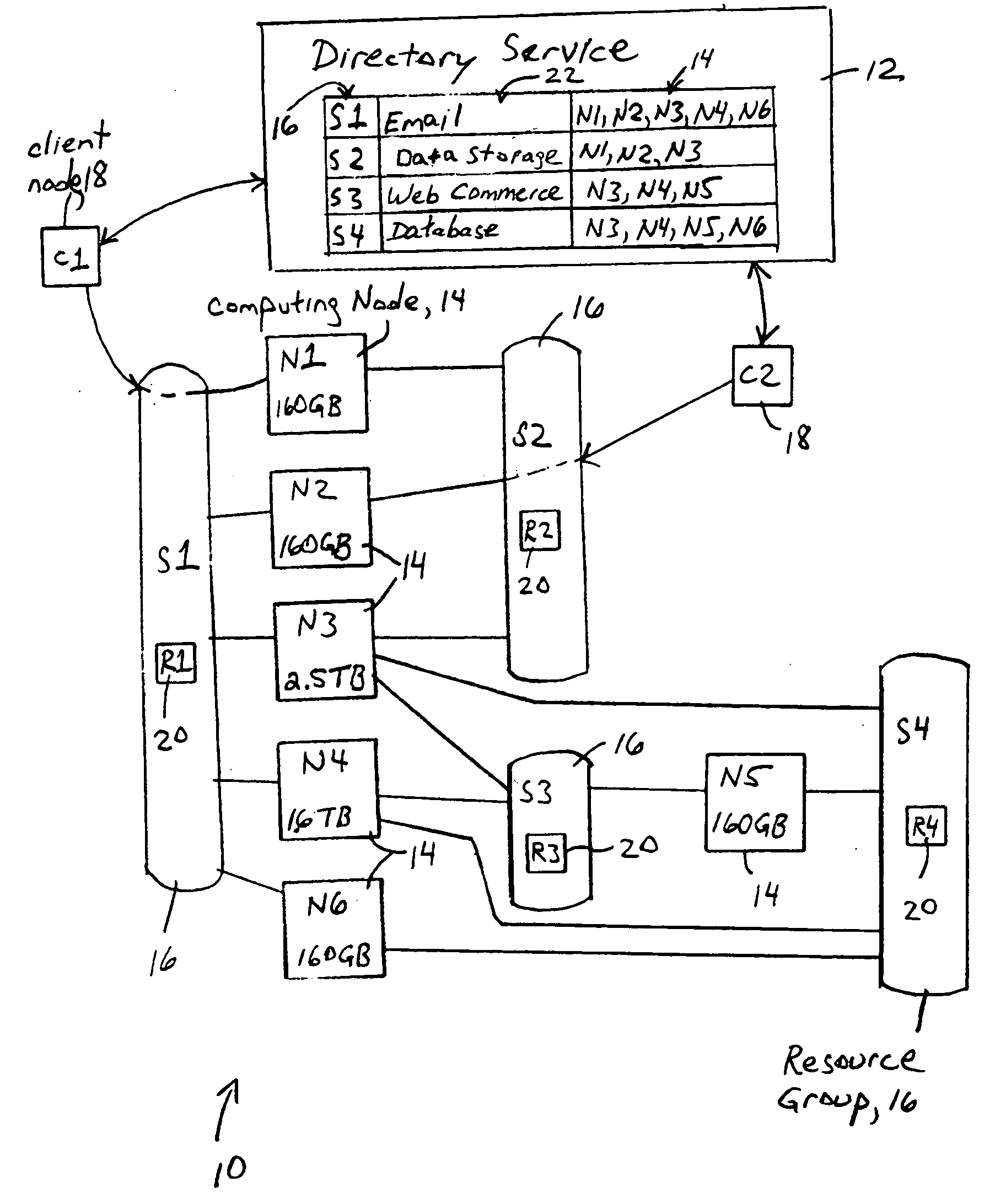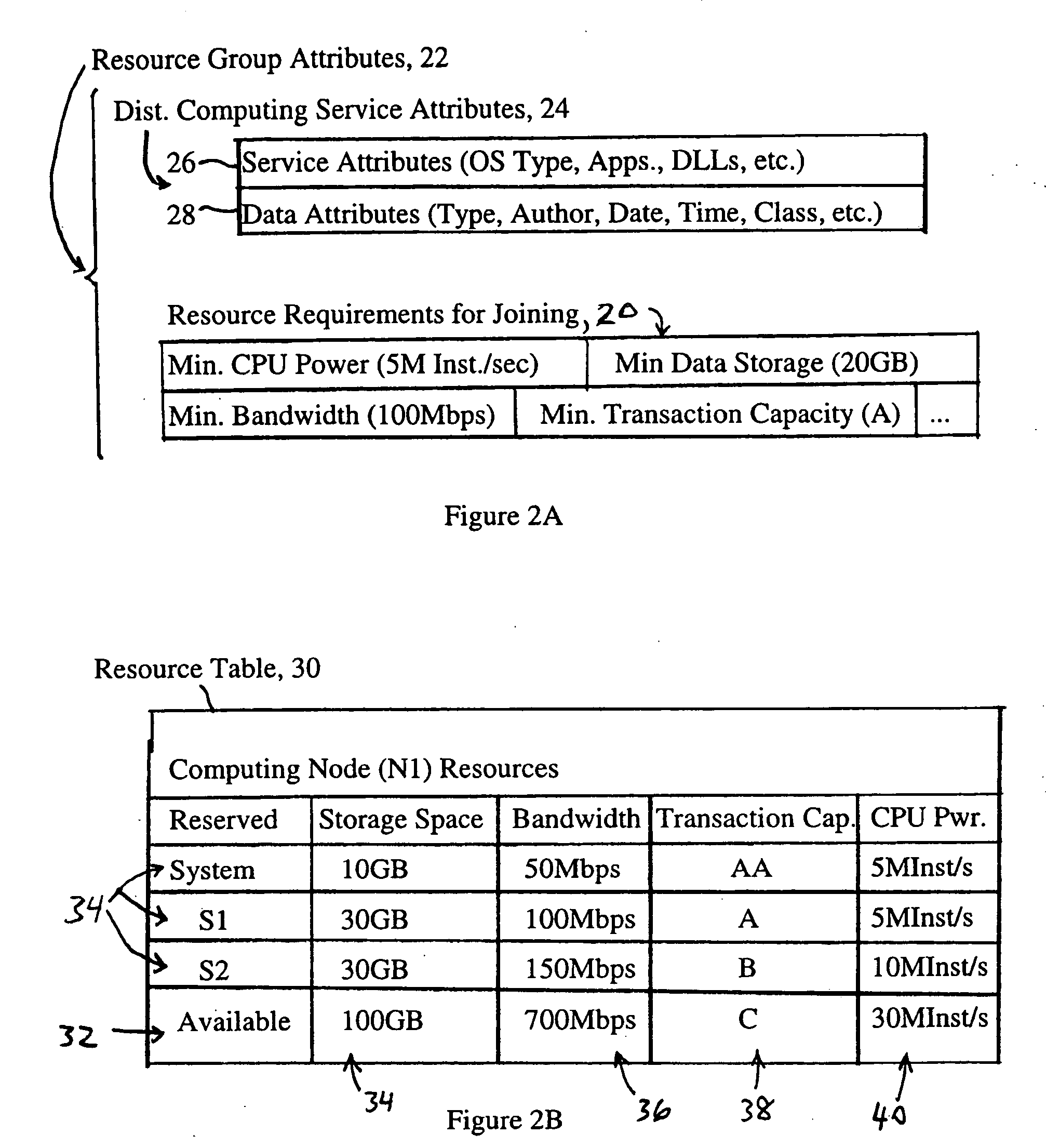Distributed client services based on execution of service attributes and data attributes by multiple nodes in resource groups
a technology of resource group and service attributes, applied in the field of distributed computing in the network, can solve the problems of increasing the number of clients, assuming that clients are unreliable and may disappear from the network, and unable to implement servers on client devices
- Summary
- Abstract
- Description
- Claims
- Application Information
AI Technical Summary
Benefits of technology
Problems solved by technology
Method used
Image
Examples
Embodiment Construction
[0026] The disclosed embodiment is directed to multiple computing nodes that are configured for joining a resource group in order to provide distributed client services. The ability to provide distributed client services is implemented based on numerous advantageous features, described in detail below, that address various aspects of distributed computing such as data replication, arbitration of data access and control, organizing computing nodes to provide distributed client services, identification of the computing nodes providing the desired distributed client services, plus identification and management of the replicated data objects into a distributed file system. These features will be described below, followed by a description of utilizing these features in order to provide distributed client services in a network. First, however, a brief overview of distributed services according to the disclosed embodiment will be provided.
Overview of Distributed Client Services
[0027] Th...
PUM
 Login to View More
Login to View More Abstract
Description
Claims
Application Information
 Login to View More
Login to View More - R&D
- Intellectual Property
- Life Sciences
- Materials
- Tech Scout
- Unparalleled Data Quality
- Higher Quality Content
- 60% Fewer Hallucinations
Browse by: Latest US Patents, China's latest patents, Technical Efficacy Thesaurus, Application Domain, Technology Topic, Popular Technical Reports.
© 2025 PatSnap. All rights reserved.Legal|Privacy policy|Modern Slavery Act Transparency Statement|Sitemap|About US| Contact US: help@patsnap.com



